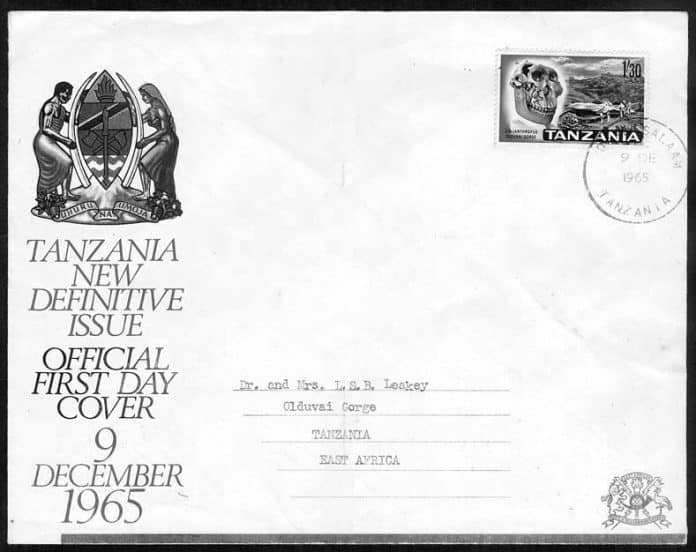Survey of the Rare Tanganyika Stamps and Postal History
This is a revisit of postage stamps and postal history of Tanganyika during British authority.
First Stamps
Tanganyika’s postal history starts with the first postal stamps which were the East African stamps and the Ugandan Empire was stamped
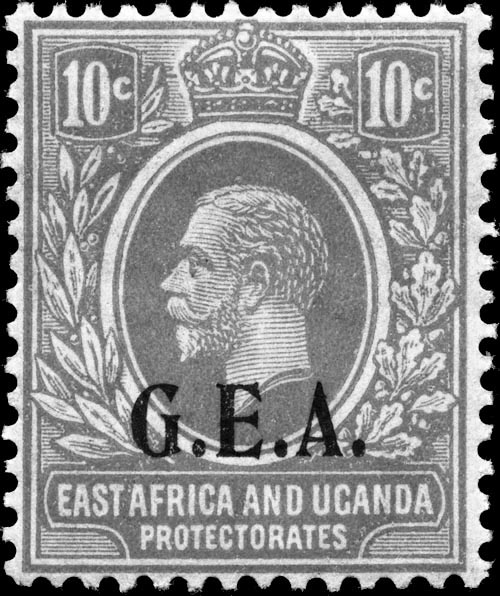
with “G.E.A.” (for German East Africa), used in 1921 and 1922. These are very similar to the last ones in German rule in East Africa, but the existence of the “Crown and Writers CA” symbol indicates they were removed after the civilian rule took over from the military, and so eloquently it is considered as the first version of Tanganyika stamps.
GERMAN POST OFFICER IN LAMU
The German postal agency was established in Lamu on February 27, 1885. German stamps were used by the agency, and these can only be identified by official marks that were stamped on letters or other postal packages.
GERMANY EAST AFRICA
The German colony in East Africa was established on October 4, 1890. The colony area included mainland Tanganyika, Burundi and Rwanda. The postal history shows that from October 4, 1890 to June 30, 1893 only German stamps were used in the colony. On July 1, 1893 stamps were issued for the colony.
During the outbreak of World War I, the Germans began to invade Britain in East Africa, Uganda, Congo, Nyasaland, Northern Rhodesia and Mozambique. The attempted British arrival in Tanga between November 2 and 5, 1914 was set back by the Germans. German East African stamps continued to be used in German-controlled territory until their surrender on November 26, 1918.
The colony was broken by the Versailles Treaty. The northwestern region was given to Belgium as Rwanda-Urundi. The Kionga triangle, a small area south of the Rovuma River, was given to Portugal as part of Mozambique. The rest of the area went to England, which ended up being called Tanganyika.
MAFIA ISLAND
The British seized Mafia Island in January 1915. Initially letters were allowed to be sent without stamps but on January 14, 1915
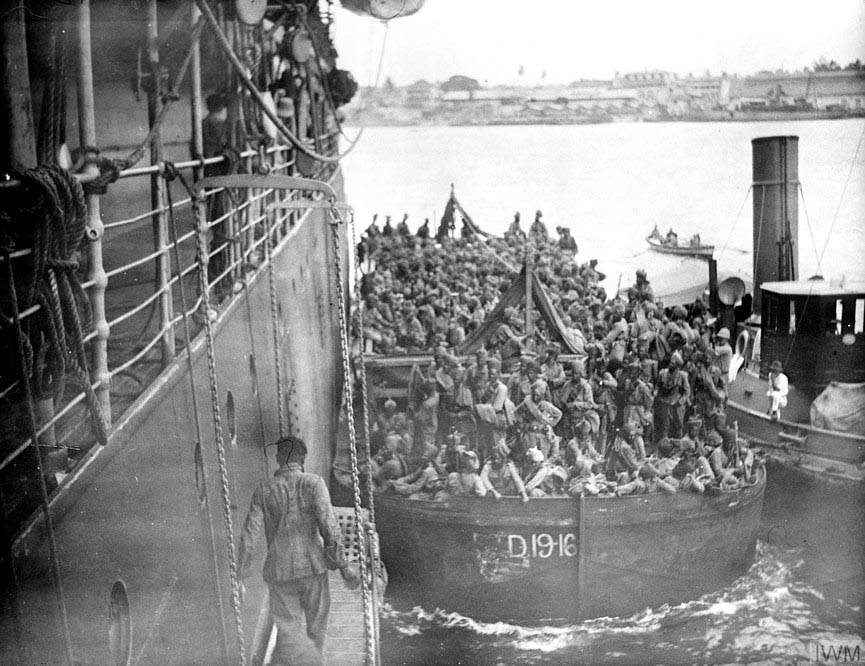
stamps were put into operation by hand stamping “G.R MAFIA” on German East Africa stamps in two lines. More stamps were added in circulation in May, 1915 by further printing German East African stamps with “G. R. POST 6 CENTS MAFIA” in four lines. Further down in this postal history, as of September, 1915 the East Africa German stamps were hand stamped with a symbol “O.H.B.M.S. Mafia” in a circle. In addition to these, the stamps of the Indian Expeditionary Forces (printed using initials I.E.F.) were also branded as “G. R. POST MAFIA” (September, 1915) or “G. R. Post MAFIA” (October, 1916) in three lines.
BRITISH OWNERSHIP GERMANY EAST AFRICA
The Allied invasion began in March, 1916 from Britain in East Africa, mainly by Indian troops. On May 20, 1916, the Nyasaland-Rhodesia Army began attacking from Nyasaland. In areas occupied by allied troops, a number of civilians were able to send letters through the Indian Postal Service using Indian stamps stamped “I.E.F.”.
Some post offices restored control to citizens on June 1, 1917. Earlier East African and Ugandan stamps were issued; then from October, 1917 East African and Ugandan stamps produced with mark “G.E.A.” were put into circulation. In 1921 the Kenyan and Ugandan stamps were stamped with the mark “G.E.A.”. The last post office to come under civilian control was on March 15, 1919.
Some time in 1914-18, the British created a model of the German boat in East Africa and printed the “G.E.A BRITISH OCCUPATION”.
In 1922 the colony became the British Empire of Tanganyika.
NYASALAND RHODESIA SQUAD
The Nyasaland Rhodesia Regiment, under the command of Brigadier General Edward Northey, launched an attack on East Africa on May 20, 1916. The Northey Regiment crossed into Germany East Africa on May 25, 1916. On May 30 they had captured Neu Langenburg. On June 6 they took over Neu Utengulc. Alt Langenburg was seized on June 13. Ubena was arrested on 30 June.
Soldiers could send ordinary letters without stamps through the post office. If there were any additional postal services required, payment
was required. For the first time, unpublished Nyasaland stamps were used. Later, at the request of Brigadier General Northey, to the Governor of Nyasaland, the Nyasaland stamps were printed with the symbol “N.F.” Northey requested that the brand mark be “N.F.F.” and the telegraph operator removed “F.” when sending a request to the Governor. The correspondence written by Northey clearly shows that he was an avid stamp collector. There is no evidence that these stamps were really needed. However, printing was allowed by the Governor of Nyasaland and stamps were used to send letters.
These stamps were obtained only through the use of the Nyasaland Rhodesia Forces. The sale of these stamps in large quantities, for commercial purposes, was prohibited. Stamps were obtained only from the post offices of the Nyasaland Rhodesia Regiment. Most of these offices were in Germany, East Africa. The Nyasaland Rhodesia Regiment also had FPOs in Nyasaland and Portugal in East Africa. These
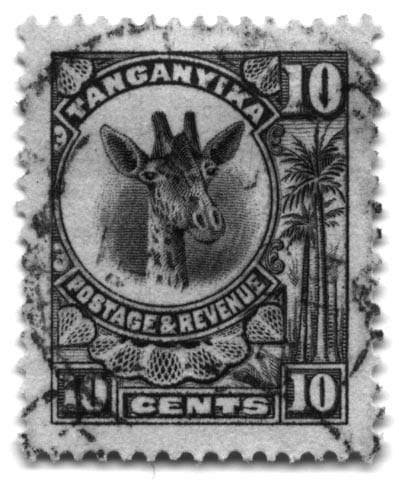
stamps were not available at any civilian office or for civilian use.
Later Issues
The postal history of Tanganyika timeline, shows that in year 1922, the government issued 19 stamps marked “TANGANYIKA”, showcasing
the head of a giraffe, identified in cents, shillings and pounds (100 cents per shilling, 20 cents per pound), and a number of color changes were made in 1925. The changes were made multiple times because there were so many leadership changes, and each leader wanted a different color.
This was followed in 1927 by the second column of 16 stamps in the most common format with the biography of King George V and inscribed “MANDATED TERRITORY OF TANGANYIKA“.
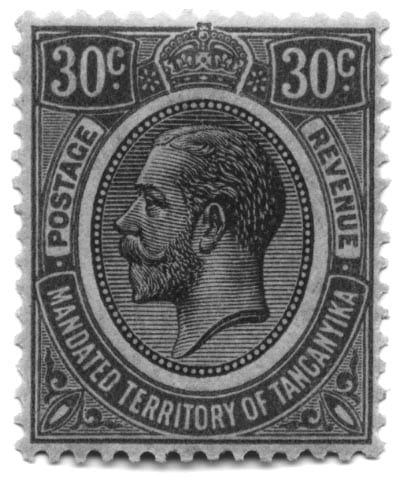
In 1927, Tanganyika entered the Customs Union of Kenya and Uganda, as well as the East African Post Office. Between 1935 and 1963, the postal joint administration (East African Post and Telecommunications Management) stamps marked “Kenya, Uganda, Tanganyika” were in circulation.
Tanganyika Postal History After Independence
Shortly after independence in 1961, the new government of Tanganyika issued a series of commemorative stamps marked “TANGANYIKA”.
This version was later followed by the remembrance issue on December 9th, 1962 which was four stamps that were printed “JAMHURI YA TANGANYIKA” (“Republic of Tanganyika”) as a way to mark the finding of the republic.
The end of Tanganyika as a nation was in year 1964, when it joined the united republic of Zanzibar to create what is now known as Tanzania. East African postal administration stamps (Kenya Uganda Tanganyika stamps) continued to be valid even after the creation of Tanzania
Zanzibar Postal History
INDIA POST OFFICE IN ZANZIBAR
The Indian Post Office was launched in Zanzibar in November, 1868 and closed on April 1, 1869
Indian stamps were used in Zanzibar from October 1, 1875 to November 10, 1895
India Post Office in Zanzibar, 1878 – 1895 by George Krieger
Dissolution exhibition, used by the Indian post office in Zanzibar from June 1, 1878 to November 10, 1895
FRENCH POST OFFICE IN ZANZIBAR
The French post office got started in Zanzibar in January, 1889. French stamps were originally used. In 1894 special stamps were issued for use from this post office. French stamps are also known to be used between 1903 and 1904. The office was shut down on July 31, 1904.
GERMAN POSTAL AGENCY IN ZANZIBAR
German stamps were in circulation via the German postal agent which operated between August 27, 1890 and July 31, 1891.
ZANZIBAR EMPIRE
In 1895 Zanzibar became a British colony.
INDEPENDENT ZANZIBAR
Zanzibar gained its independence and became an imperial, constitutional empire under the Sultan, Sayyid Jamshid bin Abdullah, on December 10, 1963.
REPUBLIC OF ZANZIBAR
The Sultan and the democratically elected government were overthrown during the Zanzibar Revolution on January 12, 1964. When the post offices opened on January 14, 1964 the stamps sold had a picture of the Sultan erased with the sign of the cross. On January 17, 1964 the stamps issued were stamped with the mark “REPUBLIC 1964” by hand.
All Zanzibar stamps were removed from the post office from January 1, 1968 and were replaced by Tanzanian stamps. Zanzibar stamps continued to be considered legitimate for usage in Zanzibar for a short period of time.
This was followed by the last edition of the memorial on December 9, 1962, with four stamps inscribed “TANGANYIKA REPUBLIC” (“Republic of Tanganyika”) to commemorate the establishment of the republic.
Tanganyika ceased to exist as a nation in 1964, when it was gradually merged with Zanzibar, to form the nation of Tanzania. East African postal administration stamps remained valid until the creation of Tanzania.
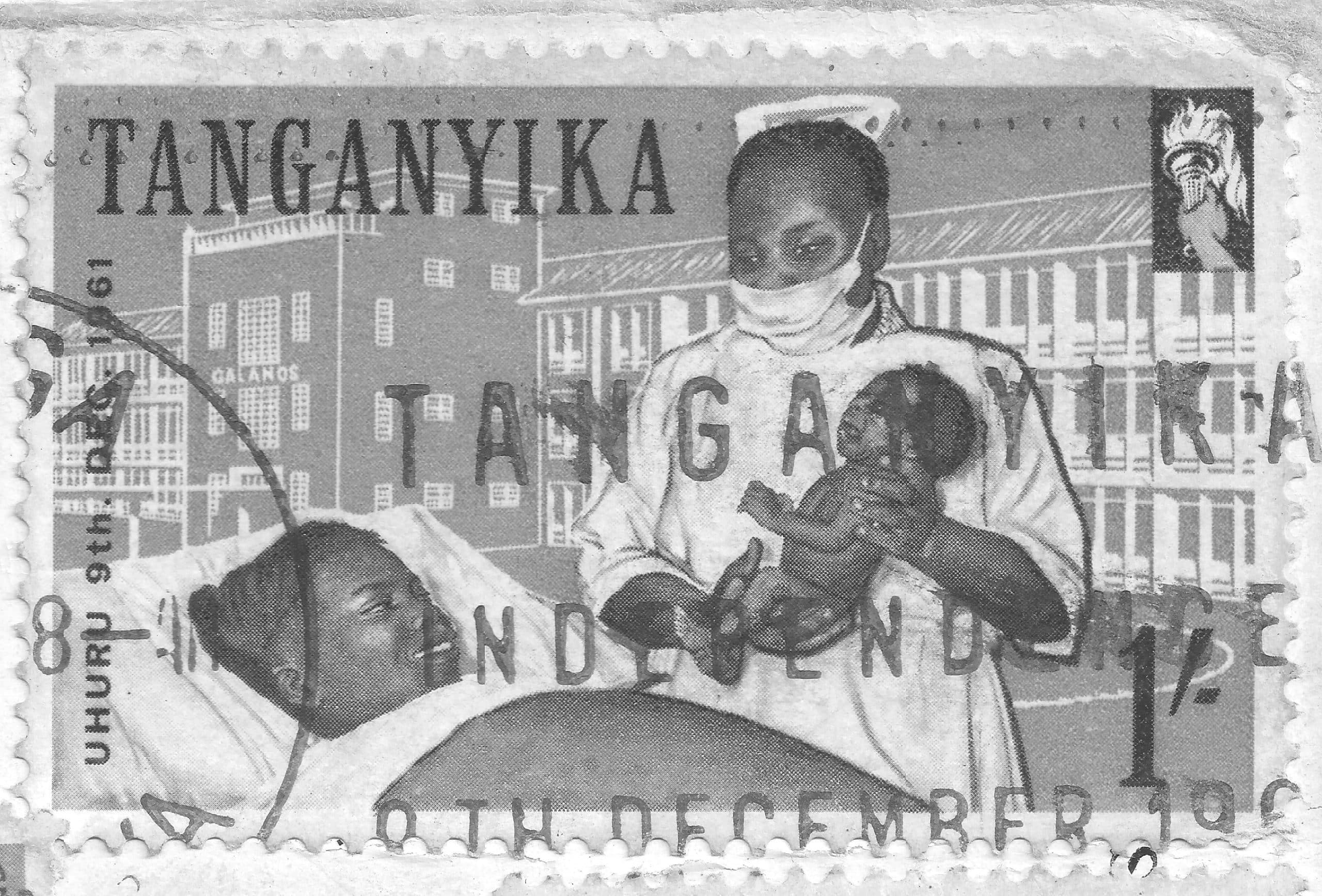
STAMP COLLECTION ASSOCIATIONS FOR STAMP COLLECTORS AND HISTORY OF TANZANIA POST SERVICE
East African Study Cycle
The East African Study Cycle (EASC) was established in 1979 to study, record and publish information related to stamp collection and postal history of Kenya, Uganda and Tanzania and all their predecessors and their implications.
East African Study Cycle Library
The East African Research Circuit Library has more than 300 publications, about half of which are stamp collections, the rest of which are of East African general interest. Books can be borrowed by members.
TANZANIA STAMP COLLECTION OFFICE
Tanzania Postal Corporation
Stamp Headquarters
S.L.P 2988
Dar es Salaam
Post Office Building
Ghana / Ohio Road
First Floor
Phone: +255 22-2137815
Fax: +255 22-2113081
BOOKS OF TANZANIA’S STAMP COLLECTORS AND POSTAL HISTORY
East African Airmails to 1939
by W Colley FRPSL, Second Edition, East Africa Study Circle, 2009, 130pp
The British India Steam Navigation Company’s Mail Packets to East Africa
by Stephen J North, East Africa Study Circle
1st Edition 1990, 30pp, ISBN 0951586513
2nd Edition 2001, 48pp, ISBN 095247543X
British Occupation of German Colonies, the Provisional Issues of the Postage Stamps of Mafia
by Greenwood, Field WEP Series No 12, 1930, 31pp
East Africa World War II: An assessment of date stamps, cancellations, censor marks and tapes relating to East Africa and East African forces during World War II
by Harry Henning and edited by P A Chantry FRPSL, East Africa Study Circle, 1996
German Mailboat Services Hamburg to East Africa 1890-1914
by Kenneth Pennycuick, RPSL, 1976, 44pp
German Mailboats from Europe to East Africa, 1890-1905
by Stephen J North, self published, 2002, 40pp, ISBN 0952475448
G.R.I. – The Postage Stamps of the German Colonies Occupied by the British 1914-1918
by Robert M. Gibbs, 1988, 290 pages
New Guinea and the Marshall Islands, Cameroons, Mafia, Samoa, Togoland. The stamps and postal history.
A Handbook on King George VI issues of Kenya Uganda and Tanganyika
by R D Berrington, Stamp Collecting Ltd, 1955, 59pp
History of the East African Army Postal Service
by Stuart Rossiter, edited by Edward B Proud, 1982
Identifying the Cancellations of Tanganyika – A Post Office Identification Handbook
by Larry Goldberg, L M G Communications, 2001, 64pp, ISBN 0967388627
The Nyasaland-Rhodesia Field Force, 1914-18
by Alan R Drysdall and Kenneth Pennycuick, published by A R Drysdall, 1986, 140pp
A Postal History of German East Africa
by Jerome G. Newman, 1973, 209pp
The Postal History of German East Africa
by Kenneth Pennycuick, edited by Edward B. Proud, 1989, 223pp
The Postal History of Tanganyika 1915-1961
by Edward B Proud, Proud-Bailey Co Ltd, 1989, 287pp, ISBN 1872465064
The Postal History of Uganda and Zanzibar
by Edward B Proud, 1993, 413pp, ISBN 1872465080
The Provisional Issues of the Postage Stamps of Mafia
by Charles Herbert Greenwood, 1930, West End Philatelists
Zanzibar: 1895-1904 : a comprehensive study of the stamps and postal stationery including the Zanzibar overprints and surcharges on Indian postage stamps … issues from 1896 to the Arms issue of 1904
by Thomas William Hall, East Africa Study Circle, 2002, 90pp, ISBN 095158653X
ARTICLES IN GIBBONS, STAMES PER MONTH
March1950 edition GSM pp 80-82
NYASA-RHODESIA FORCES 1915-1918, STAMES AND DELETE, By W G Nodder
History of the Armed Forces, details of stamps issued, stamp marks used, post office locations as known at the time. The text is based on a collection of authors and two references. (1) The South African Philatelist Stamp Collectors, Volume 10, Number 10, page 146. (2) The Encyclopedia of British Empire Stamps, The Encyclopedia of British Empire Stamps, by Robson Lowe, Volume 2, pages 141, 208 and 209.
August 1991 GSM Edition pp 29-31
NYASALAND STAMES PRINTED ‘NF’ by Alan Drysdall
History, details of printed stamps, paper numbers, basic stamps, paper form, type, confirmation and illustrations, release dates.
For more articles about Tanganyika click here!

























